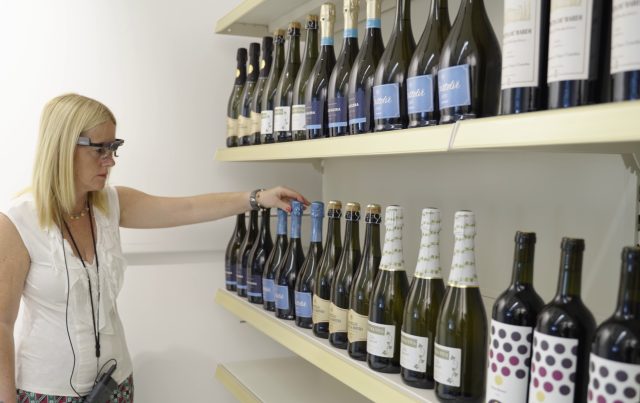In a scientific study exploring the emotional impact of wine capsules on consumers, it was found that nine out of 10 shoppers prefer a wine bottle with a capsule. Furthermore, synergy between the capsule and label is paramount for “brand recall”.

Cutting edge technology including “eye-tracking” and “bio-tracking” were used in a study carried out by SenseCatch on behalf of closures company Crealis to determine the importance of capsules on wine bottles in customers’ buying choices.
Test subjects were 30 consumers aged 25 to 50, all of whom described themselves as “decision-makers” in their household when it comes to buying wine. A simulated wine aisle was set up for participants to peruse bottles of red, white and sparkling wine (all fictitious brands), with some of the bottles sporting capsules and foils, and some without. As well as the technological monitoring, participants also underwent interviews and tastings to glean their opinions about the importance of a capsule.
According to SenseCatch, 90% of the information transferred to the human brain is “visual”, and the biggest finding from the study is that nine in 10 participants preferred bottles fitted with a capsule. The presence of a capsule impacted the shopper’s perceived value of the wine, and its price positioning, with participants assuming that bottles with capsules were more expensive. Interestingly, tastings also showed a subconscious leaning towards wines sealed with capsules, with shoppers reporting these to have a more “pleasant and persistent” flavour than those without a capsule.
Additionally, biometric measurements revealed that a capsule’s “texture, shine, colour or personalisation” all impact a consumer’s emotional response to a wine. This level of attachment increased further still when a shopper “handled” a bottle with a capsule.
 A test shopper browses the simulated wine aisle created by SenseCatch, wearing “eyetracking” sensors to determine product stand-out
A test shopper browses the simulated wine aisle created by SenseCatch, wearing “eyetracking” sensors to determine product stand-out
Holy grail
However, the holy grail combination was shown to be one where there is “cohesion” between the capsule and the front label. SenseCatch found that the synergy between the two is essential for shelf recognition and recall. “A capsule that is well-integrated into the overall design strengthens brand identity,” it said.
Not only this, but coloured or metallic capsules served as “a visual magnet”, boosting customer recognition further still. Add in an element of brand personalisation to the capsule and shoppers’ perception of “premiumisation, differentiation and desirability” shot up even higher.
Summarising, SenseCatch concluded that: “The capsule is much more than a decorative detail. It is a tool for selectivity, perceived value, and emotional engagement.”
Adding to this, Crealis’ group marketing and communications director Isabelle Gruard said that the study demonstrates that “in the world of wine, every detail counts and the capsule in particular, is a genuine marketing tool.”
Related news
A robotic revolution is transforming the way closures are made
Arturo Martorelli named new chair of Aluminium Closures Group

